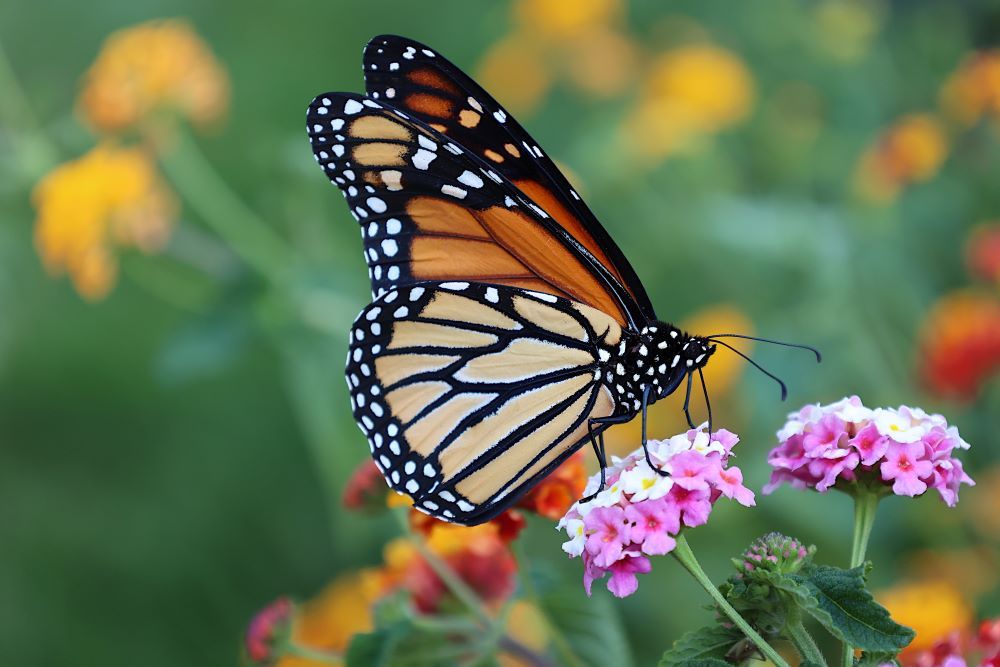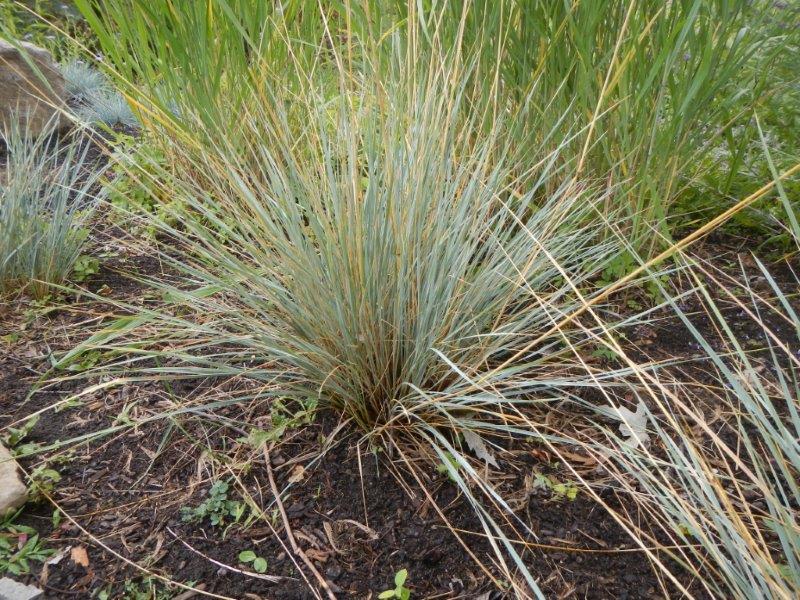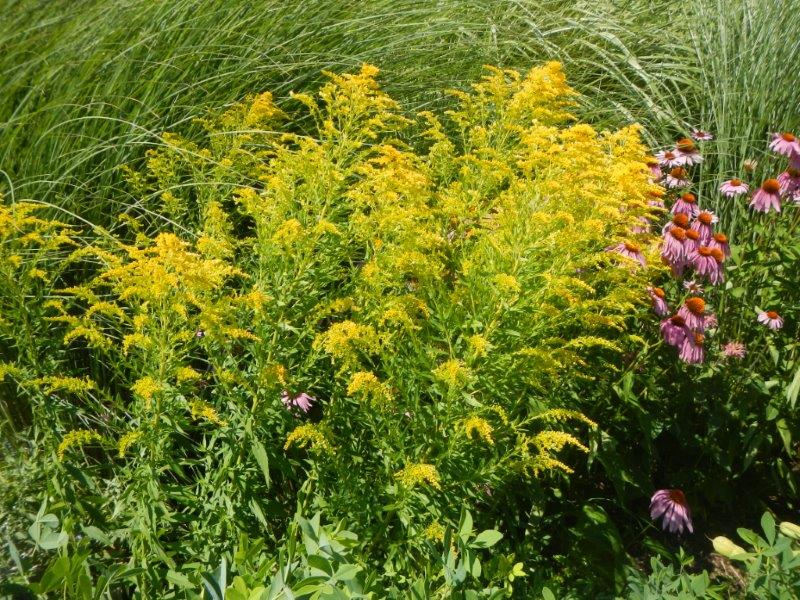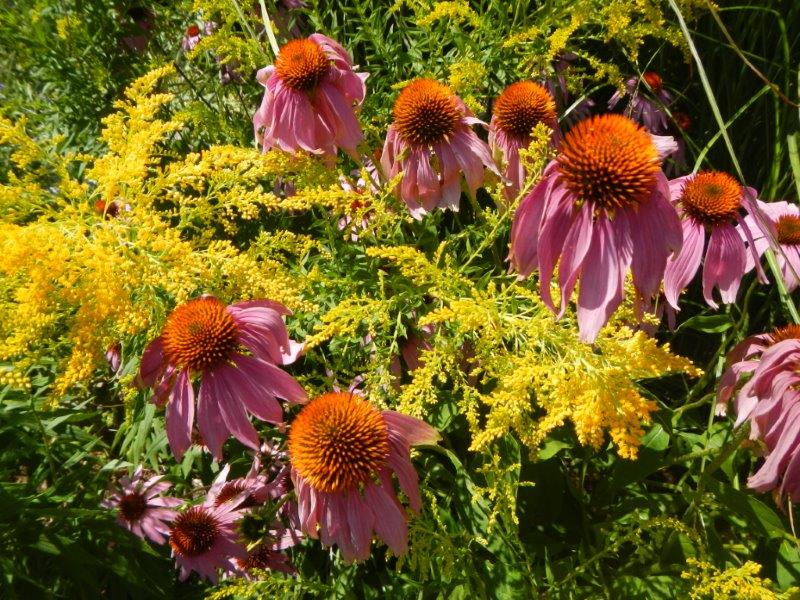Creating a pollinator-friendly garden
Pollinators include bees, butterflies, ants, beetles, bats and birds. They are an important aspect of our gardens and local ecosystems, producing natural resources by pollinating plants in the spring, summer and fall.
This page explains the importance of pollinators, why they are at risk and how you can encourage pollinators in your own garden.
Why pollinators are important
Cross-pollination
While we may think that plants are self-sufficient with water, sunlight, and nutrients, pollen is needed to aid the fertilization process. It's taken up by the pollinator and dropped on the next plant it stops at.
- Cross-pollination allows for plant species to reproduce and boost biodiversity, keeping greenspaces and vegetation alive.
- About 75 per cent of all flowering plants need to be pollinated to reproduce. Pollinators carry pollen from one plant to the other. Typically when a butterfly or bee lands to collect nectar, it is spread into part of the flower called a stigma.
- By transferring pollen from one plant to the next, plants are able to continue to grow and spread throughout different habitats, supporting biodiversity for both flora and fauna.
Food and crops
- More than 1,200 food crops and 180,000 different types of plants are pollinated by insects around the country, supporting flora and fauna ecosystems, and humans alike.
- One out of every three bites of food that we eat is because of pollinators.
Economies
- Pollinators impact industries in medicines, biofuels, agriculture and food security, and fibres and cotton.
- In addition to bees, butterflies, moths, wasps and other species are responsible for 32 of our economic crops that are produced and sold.
- In this way, managed pollinators directly contribute to roughly $897 million towards the Ontario economy.
Mitigating climate change
- Healthy, dense vegetation means that there is an increased biomass. This is key for mitigating climate change as vegetation stores carbon, which would otherwise persist in our atmosphere.
- This 'carbon sinking' allows for both localized and widespread temperature moderation, as well as water storage - an important step in water conservation.
- Pollinators are key in maintaining healthy dense vegetation. Without them there is an increase in environmental pollution, as these plants are no longer naturally filtering toxins.
Why pollinators are at risk
Bees and other pollinators continue to be at risk not only throughout the province, but globally as well. Consider this:
- Neonicotinoids are a common pest control method with harmful consequences to our pollinators. While being regulated in Ontario, pesticide use can easily lead to direct death of these key species, making its way into the environment, thereby leading to further exposure and habitat loss.
- With Ontario continuing to urbanize, land use changes are leading to a lack of greenspace and vegetation.
- Climate change is exacerbating these issues. Growing seasons are being shifted, migration patterns are changing, and there is an increase in extreme weather events.
With these scenarios happening simultaneously, Ontario’s pollinator health is struggling.
Help pollinators in your backyard
Creating a drought tolerant garden to conserve water or practicing sustainable and organic gardening is beneficial to promoting a balanced local garden. Taking it one step further, we can create a habitat for pollinators that protects and promotes future growth.
Providing a habitat for pollinators is the first step in helping the declining species. Here is a list of ways you can start to help:
- Plant native flowers that bloom throughout the spring, summer and especially the fall.
- Cancel the fall cleanup! Leaving the leaves and dead plant material for shelter and food in our harsh winters is a critical step in helping pollinators thrive during the next growing season.
- Offer pollinators a drink. Leaving shallow dishes of water can help pollinators stay hydrated during drought seasons. Be sure to empty and refill the dish every three days to discourage the maturing of mosquito larvae.
- Practice organic gardening. Using harsh chemicals or pesticides in your garden can be harmful to pollinators.
- Provide shelter and nesting sites for the pollinators. There is a large variety pollinators that have different needs for nesting and shelter. Bee boxes, insect hotels and planting milkweed are all great ways to provide for pollinators. Get more information on insect hotels.
Plants that attract pollinators
Planning your garden to be drought tolerant, organic and create a safe habitat for pollinators can be a grand task. To provide some helpful insight, we have listed some perennials, trees and shrubs that are beneficial to pollinators and can be sustained in dry soil.
Little Bluestem (perennial)
Stiff Goldenrod (Perennial)
Coneflowers (perennial)
Black eyed Susan (perennial)

And these additional plants:
- Big Blue Stem (perennial)
- Calico Aster (perennial)
- Common Milkweed (perennial)
- Prairie Dropseed (perennial)
- Wild Strawberry (perennial)
- St. John’s Wort (perennial)
- Red Osier Dogwood (shrub)
- Sandcherry (shrub)
- Prairie Willow (shrub)
- White Oak (tree)
- Bur Oak (tree)
For a more extensive list of native plants, visit our water conservation garden page.
Pollinators in Ontario
In Ontario we have a hotspot for bees, but there are also over 420 other species that help maintain our plants and vegetation across the province. These plants, in turn, are key in feeding the population and maintaining ecosystems.
The following species are pollinators flagged as at risk in Ontario.
Yellow banded bumble
The yellow banded bumble, which is key in the harvesting of apples and cranberries, is at risk because of the combined impacts of pesticides, climate change and pathogens transferred from commercial colonies.
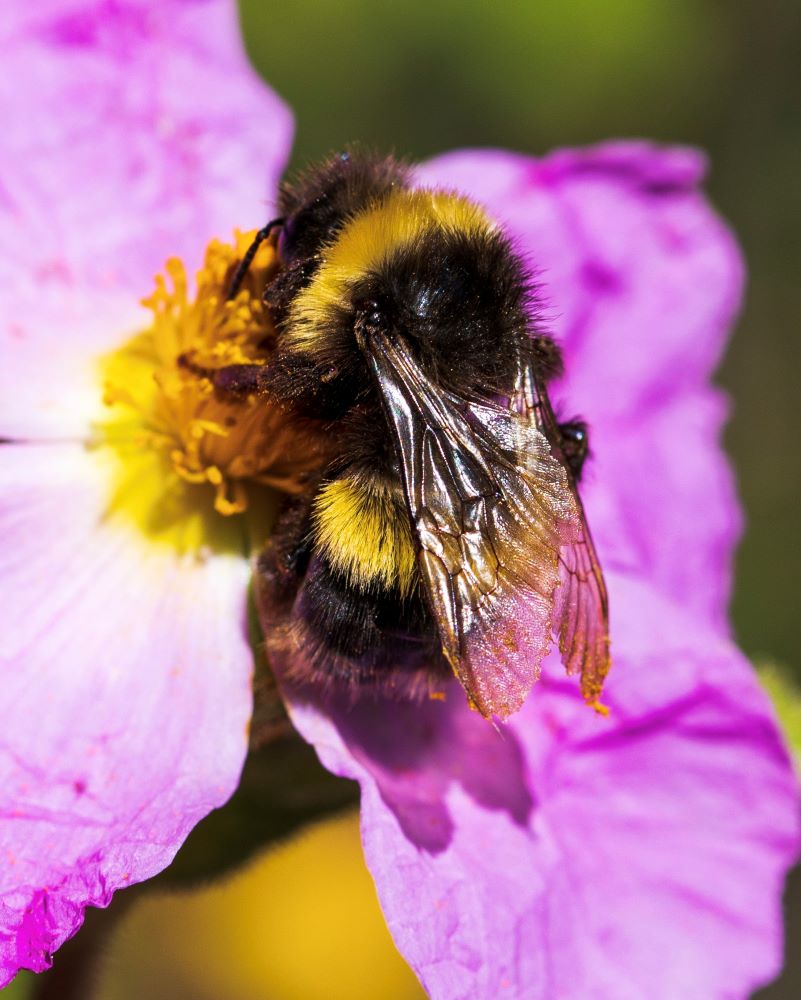
Rusty patched bumble bee
The rusty patched bumble bee is one species that is endangered due to widespread pesticide use. While it is protected by the Ontario government, there have only been a few sightings and collected specimens in one provincial park.
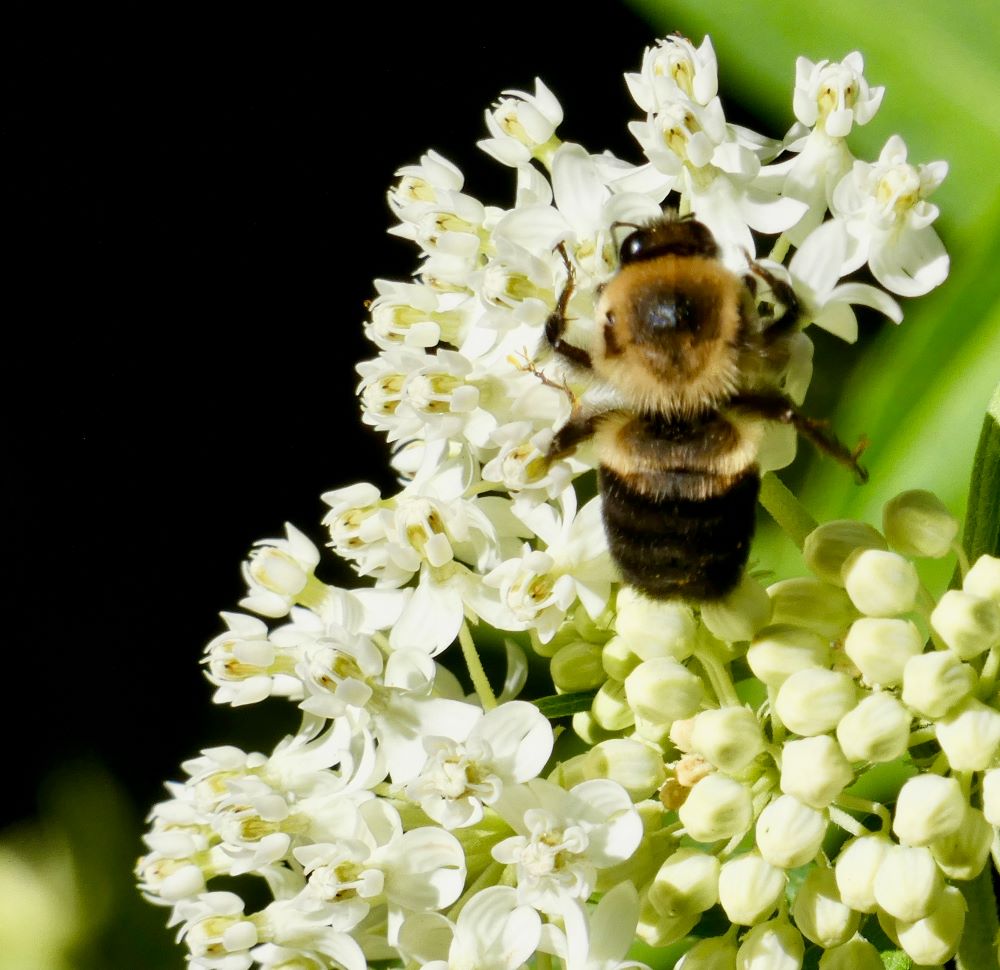
Gypsy Cuckoo bumble bee
The Gypsy Cuckoo bumble bee is another pollinator at risk. Unlike the other Ontario species, these are nest parasites, which means they rely on other species to survive. Eggs are laid in the nest and pollen of other bee species, including both the yellow banded and rusty patched bumble bees. This means as these populations decrease in Ontario, so do those of the Gypsy Cuckoo.
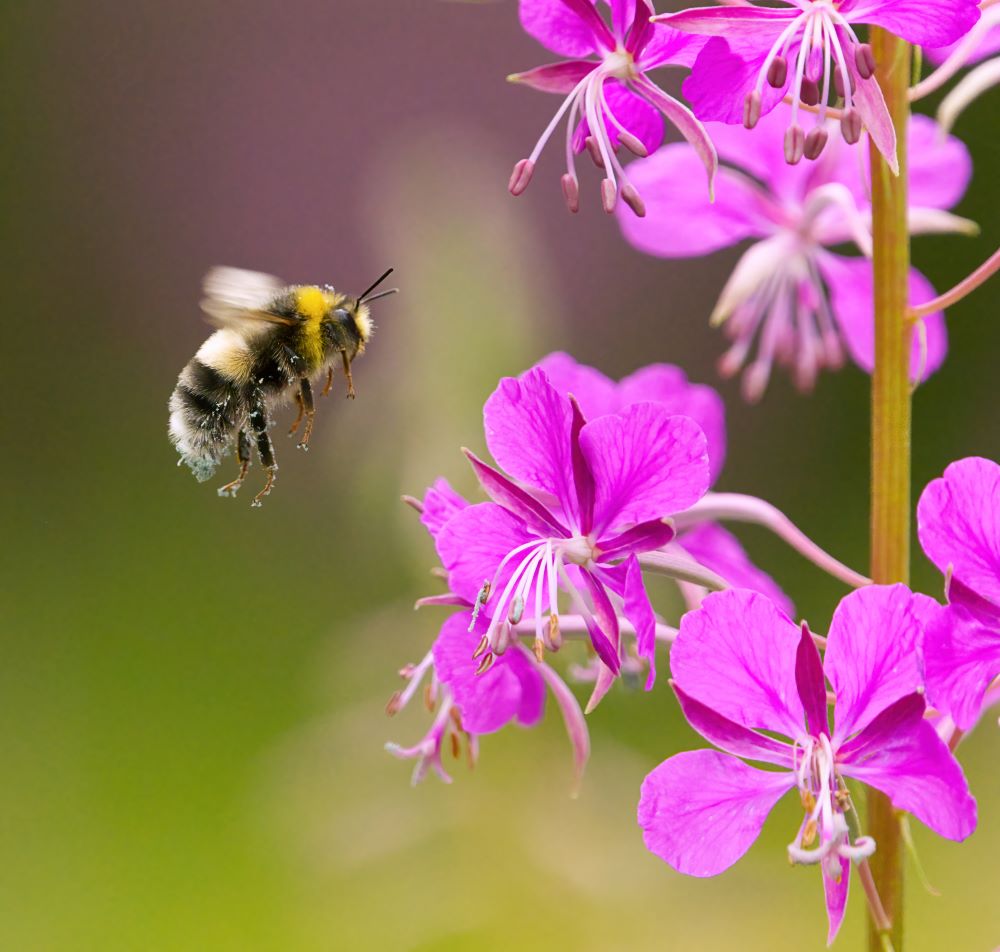
Monarch butterfly
The monarch butterfly is also suffering across Ontario. Overwintering occurs in habitat sites, which leads the butterfly to remain in conditions it cannot survive for extended periods. Meanwhile, continued urbanization is decreasing habitats such as milkweed, the only plant which monarch butterfly caterpillars eat. This is likely linked to pesticide use as well.
